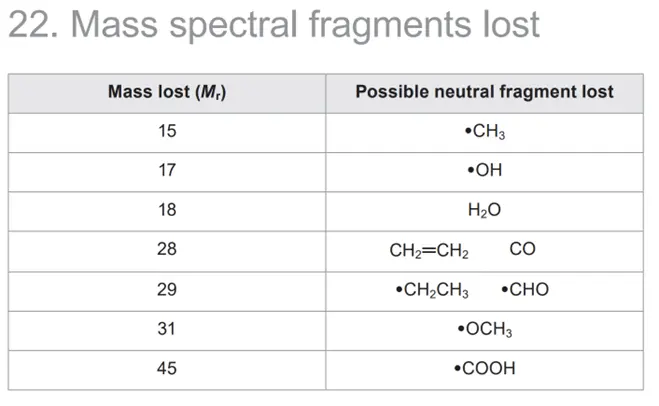Mass Spectrometry (MS) of Organic Compounds
How Does Mass Spectrometry Work?
- Mass spectrometry operates through three fundamental steps: ionization, separation, and detection.
- Each step plays a critical role in generating a mass spectrum.
- Ionization:
- The sample is bombarded with high-energy electrons, causing the molecule to lose an electron and form a positively charged ion, known as the molecular ion (M⁺).
- This ion may remain intact or fragment into smaller ions.
- Separation:
- The ions are accelerated into a magnetic field, where they are separated based on their mass-to-charge ratio ($m/z$).
- Since most ions have a charge of +1, the $m/z$ value typically corresponds to the ion’s mass.
- Detection:
- A detector measures the abundance of ions at each $m/z$ value, producing a mass spectrum, a graph with $m/z$ values on the x-axis and relative abundance on the y-axis.

The Molecular Ion (M⁺): A Key Starting Point
- The molecular ion (M⁺) is the ionized form of the entire molecule, with no fragmentation.
- Its $m/z$ value corresponds to the molecular weight of the compound.
- Identifying the molecular ion peak is often the first step in analyzing a mass spectrum.
If a compound produces a peak at $m/z = 86$, this peak likely represents the molecular ion, indicating that the molecular weight of the compound is $86 \text{ g mol}^{-1}$.
Fragmentation Patterns: Clues to Structure
- When the molecular ion breaks apart, it forms smaller fragments. Each fragment corresponds to a specific part of the molecule, and its $m/z$ value provides clues about its identity.
- By analyzing these fragmentation patterns, you can deduce structural features of the compound.
Common Fragmentation Patterns
- Certain bonds in organic molecules are more likely to break during ionization, leading to predictable fragmentation patterns.
- Here are some common examples:




